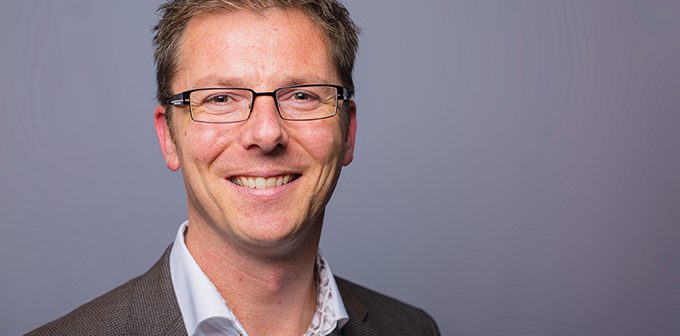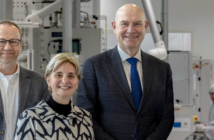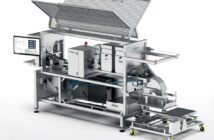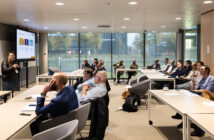VIRO is a multidisciplinary engineering firm capable of covering the entire chain – from specification to implementation and commissioning of machinery or equipment – for customers. In recent years VIRO has bolstered its strength in electrical engineering & instrumentation and software & control, coming as it does from a mechanical perspective. Thus enabling VIRO to provide system integration both in industrial projects – where the scope has always encompassed the full installation – and in mechanical engineering – where system architecture and advanced control determine the added value these days.
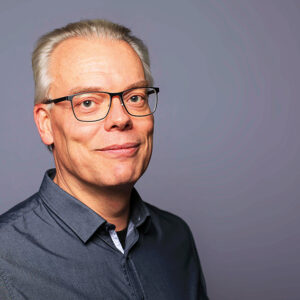
Edwin Brunenberg, Head of Industrial Projects department at VIRO in Echt: ‘Within industrial projects the focus was always on system integration, with a lot of time in the concept phase being devoted to harmonisation between the disciplines.’
Strong at system architecture
VIRO has 700 staff, and in addition to its head office in Hengelo (NL) has another four sites in the Netherlands, three in Germany and one in Austria. The international engineering firm specialises in engineering and project management and is specifically focused on product engineering, mechanical engineering and industrial projects.
VIRO was well-known as an engineering firm with a mechanical engineering bent, but it has always worked in a multidisciplinary fashion within the compass of industrial projects. So says Edwin Brunenberg, who heads up the Industrial Projects department in Echt. ‘Taking care of electrical engineering and instrumentation technology, plant design, construction and architecture, we cover a wide range of disciplines for clients in such market segments as chemicals, energy and paper. We always look at the factory or production facility as a whole, which needs to be operating at maximum efficiency by generating maximum output with minimal downtime. In order to be able to achieve this, you need a complete overview in engineering, and you can’t fixate on technical details.’
Likewise, a broad, ‘holistic’ view is required in mechanical engineering, explains Jacob Vlasma, Site Manager at VIRO Hengelo. ‘High tech is developing rapidly, and time and again the interactions between the various subsystems are greater in scope, thereby increasing the complexity of projects. A development we’re happy to keep pace with, as it gives us more of a challenge in our work. Which is why we’ve bolstered our strength in hardware engineering and routing, for electrical engineering and instrumentation, as well as in software engineering, for the control, all in all summed up as SIM (Smart Industrial Machinery). This makes us a fully fledged partner for our customers, enabling them to concentrate on their specialisms. We have mastered the surrounding disciplines, including throughout the supply chain. Our customer does the system integration for his machine, we do it for the module or partly completed machinery that we supply to him.’
Mechanical engineering
As a multidisciplinary engineering firm, VIRO uses the famous V model for mechanical engineering projects, says Vlasma. ‘A lot of customers are working with it too. It helps us to keep a proper record of the engineering processes and to share the right information with the right team members at the right time, internally and at the customer’s site. We work closely with the customer, particularly in the initial phase of a project, to gain solid insight into what he wants and to immediately be able to validate whether that corresponds to what it is we’re developing.’
It all starts with the customer’s query. ‘Sometimes we put together the specifications and develop a concept, and sometimes we carry out a feasibility study for the new product or system first.’ If there is confidence in the new product, then VIRO will flesh out the specifications by questioning the various stakeholders at the customer’s place of business – from management, production, testing department, etc. ‘Headed up by a system architect, the team translates the query into a functional overview: what functionality is required for fulfilment of the specifications to be possible? We flesh out that functional overview into a system design. In this regard, we come to the table with the various disciplines to acquire and maintain a picture of the interaction between the subsystems. By working in sprints and producing demos, we regularly check whether that information has been properly understood, thus preventing an uncontrolled increase in the range of interpretations. We also see to it that the supply chain is connected up early on in the development process, enabling parties to contribute their thoughts on the feasibility. After all, we do get prototypes and small series built, but our ambition isn’t to start providing series production ourselves. We’ve got a good team of project managers and system architects in place for the purposes of managing this engineering process. Combined with the personal contact with the customer, it’s this process management that makes us strong.’ That said, Vlasma is keen to keep expanding staffing of hardware and software engineering. ‘The aim is to get the department to grow to around 55-60 FTE by 2021.’ The recent takeover of software firm Dacon ECP ties in with this ambition (see the Dutch-language April edition of Link).
Industrial projects
The V model approach has been common in the industrial sector for quite some time now, adds Edwin Brunenberg. ‘Within industrial projects the focus was always on system integration, with a lot of time in the concept phase being devoted to harmonisation between the disciplines. Because in industry they’re used to chopping up the actual engineering and production of equipment into chunks and assigning these to different partners or contractors. What’s more, we’re seeing a trend towards the end customer having less and less technical knowledge. Meaning that within a project we’re having to shield the customer – at both a conceptual and detailed level – from technical problems that he’s no longer in a position to anticipate. In the case of machine or process safety, for instance, some modifications to existing equipment mean that safety can no longer be guaranteed.’
When it comes to approaching system integration, the worlds of mechanical engineering and industrial projects learn from one another within VIRO, says Brunenberg. ‘They might seem to be worlds apart. The accuracy to within millimetres in a processing plant, for example, is nowhere near enough for a semiconductor machine. There is a match in terms of process, however, particularly when it comes to project management and the disciplines of control technology and electrical engineering. One thing we are seeing, though, is that a control system needs to last for 10-15 years without modifications being necessary, whereas updates are possible much more rapidly in mechanical engineering.’
New tendering model
Process engineering is somewhat more conservative than high tech, explains Brunenberg, though VIRO does of course home in on new technological developments for this sector too. ‘Control systems are becoming smarter, meaning that the intelligence of machinery or equipment doesn’t need to be as high. And mechatronics is increasingly superseding “old-fashioned” actuators.’ But he does not anticipate a revolution erupting around Industry 4.0 and the Internet of Things (IoT). ‘The technology has been available for quite some time now. Although the sensor technology has become less expensive and incorporating big data is now extremely straightforward, it’s still rare that I’m surprised by a brilliant perspective or a genuinely new business case. The knowledge and expertise and the technology for IoT is there, so now the thing to do is to start thinking outside the box.’
What is spectacular is the changes in terms of the relationship with clients for industrial projects. Brunenberg is referring to the tendering model and illustrates this by way of a project for TenneT, operator of high-voltage electricity grids. The project pertained to the engineering of new switching and distribution stations and in particular to the renovation of the existing stations too. ‘It used to be that we’d have to engineer these stations in line with detailed instructions from TenneT on how they needed to be built. In the model from UAV-GC (an integrated contractual form in which the responsibility for the design is shifted from client to contractor, ed.) we’re largely able to decide on the details ourselves, based on the requirements drawn up by the client. It goes without saying that we need to demonstrate that the result satisfies all requirements. VIRO was the first engineering firm to adopt this new way of working for TenneT. That took a lot of blood, sweat and tears, but together with the client we achieved a good result.’ Talk about integration.

